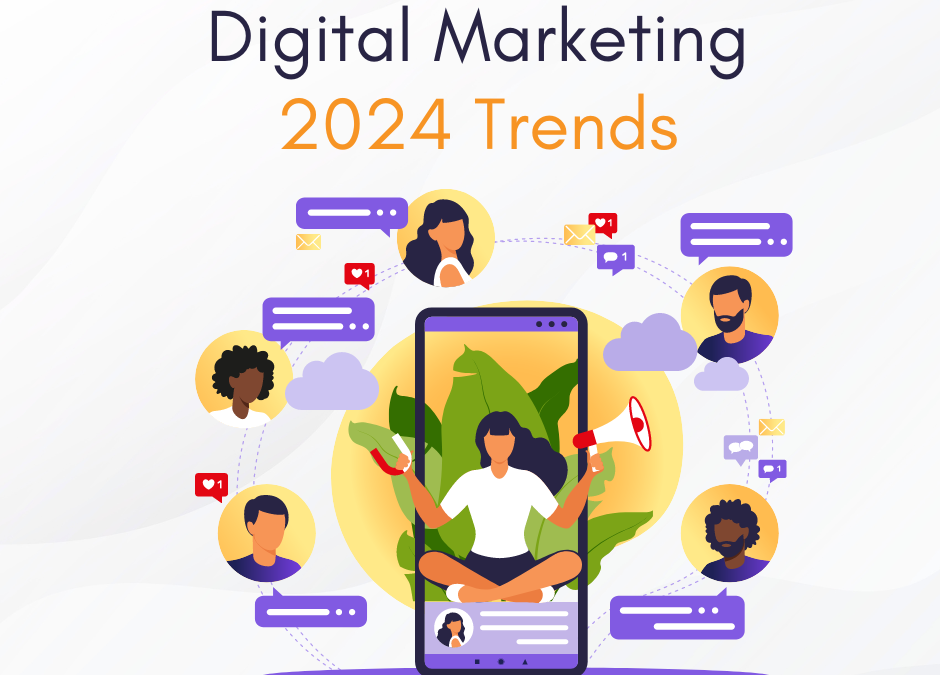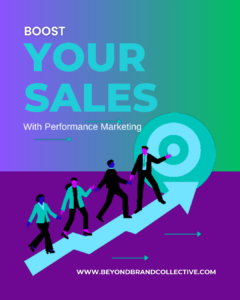
Top 5 Web Site Projects to Improve Traffic Volume
Many people ask us what they can be doing to improve the volume of traffic that visits their web site. This is one of the things about digital marketing that has not changed over the years. You have to have an SEO strategy, produce high quality traffic and engage in social media. The other key factor in driving high traffic volume is keeping your site speed and performance. Finally, email marketing will drive targeted traffic to your site.
Optimize for SEO (Search Engine Optimization):
Implementing proper SEO techniques, such as using relevant keywords, creating high-quality content, optimizing meta tags, and building backlinks, can significantly improve your website’s visibility on search engines like Google, leading to increased organic traffic.
Produce High-Quality Content Regularly:
Publishing fresh, informative, and engaging content regularly not only attracts visitors but also encourages them to return and share your content. Content that addresses users’ needs and interests can drive traffic through organic search, social media, and referrals.
Improve Website Speed and Performance:
Ensure your website loads quickly and operates smoothly across all devices. Slow-loading pages can frustrate visitors and lead them to abandon your site, resulting in decreased traffic. Optimizing images, minimizing HTTP requests, and utilizing caching techniques are some ways to enhance website performance. There are tools to help you do these things efficiently but some of this work requires manual changes and often a developer.
Utilize Social Media Marketing
Engage with your audience on popular social media platforms like Facebook, Twitter, Instagram, LinkedIn, and Pinterest. Share your content, interact with followers, and participate in relevant discussions to increase your website’s visibility and drive traffic from social media channels. Many don’t realize that social media may have low physical engagement (likes, comments) but is driving quality traffic to your web site.
Implement Email Marketing Campaigns:
Build an email list of subscribers interested in your products, services, or content. Regularly send valuable information, promotions, and updates to your email subscribers to drive traffic back to your website. Personalized and targeted email campaigns can be highly effective in attracting visitors and converting them into loyal customers. The frequency and content of an email marketing campaign is dependent on your goals, budget and target audience. Once those things are determined an email marketing strategy can drive quality traffic to your web site.
By focusing on these five strategies, you can significantly impact traffic volume on your website and attract more visitors over time.

Why your Search Engine Optimization Needs to Shift
So often we find that our prospects SEO strategy has fallen behind the competitive landscape, search engine requirements and business goals. Is this you? Listen to this quick 5 minute video to learn what to do about it.
Performance Marketing
 Performance Marketing:
Performance Marketing:
Performance marketing is marketing that is measurable and campaigns whose results can become predictable. The results data from performance marketing drives the decisions regarding future campaigns and current campaign optimizations. You can also work with an agency on a “performance basis” or you can pay for leads, or a percentage of your success from campaigns they run. Performance marketing has been an ever growing aspect of digital marketing. Digital marketing is insanely measurable and lends itself to performance measurement. You can measure impressions, clicks, conversions and sales of every digital marketing campaign you run. Performance marketing has gained significant traction due to its data-driven approach and the ability to demonstrate measurable results. This service involves utilizing various digital channels, such as paid advertising, search engine marketing, and social media advertising, to drive specific actions or conversions. Performance marketing focuses on optimizing campaigns based on key performance indicators (KPIs) such as clicks, leads, and sales.
Why Performance Marketing Is a Highly Sought After Service
- Measurable ROI: Businesses appreciate the transparency and accountability of performance marketing, as it allows them to track and measure the return on investment (ROI) of their marketing campaigns accurately.
- Targeted Advertising: Performance marketing enables highly targeted advertising, reaching specific audiences based on demographics, interests, and online behavior, leading to more efficient and effective campaigns
- Data-Driven Decision-Making: With the abundance of data available, performance marketing relies on analytics and data insights to make informed decisions, optimizing campaigns in real-time for better results.
- Scalability: The scalability of performance marketing makes it suitable for businesses of all sizes. Whether it’s a startup or an established enterprise, campaigns can be tailored to meet specific goals and budgets.
- Adaptable Strategies: The dynamic nature of digital platforms requires constant adaptation. Performance marketing agencies are adept at adjusting strategies based on changing algorithms, consumer behavior, and market trends.
- Multi-Channel Integration: Performance marketing often involves integrating campaigns across multiple channels, creating a cohesive and synchronized approach to reaching and engaging target audiences.
In conclusion, while various digital marketing services remain crucial, the demand for performance marketing has surged. Mostly because businesses seek accountable and results-driven strategies. As the digital landscape evolves, it’s essential for agencies to stay agile and continue innovating to meet the ever-changing needs of their clients. We offer performance marketing campaigns and have driven success for many of our clients using the above listed methods. Let’s chat about how we can help you too.
Like what you are reading? Donate to this site.
Digital Media in 2024: Shifts and Key Observations
What do you believe will have the most significant impact in this era of digital transformation? Is it one of these mentioned or something else? What are you doing to prepare your organization to adjust to these shifts? Share on X
What are some of the shifts and issues we are seeing on the digital marketing landscape and why do they matter? First Artificial Intelligence from our perspective:
The adoption of artificial intelligence (AI) in businesses has reached a significant milestone, with 35% of businesses incorporating AI into their operations. This surge in AI integration is mirrored by the widespread use of AI in devices, as 77% of currently used devices feature some form of AI technology. The statistics point to a growing acknowledgment of AI’s potential to transform various industries and enhance overall efficiency.
A striking revelation is that 9 out of 10 organizations actively support the integration of AI, recognizing its role as a competitive advantage. This overwhelming support suggests a consensus among businesses that AI is not just a technological trend but a strategic imperative for staying ahead in the market.
The economic impact of AI is projected to be substantial, with predictions stating that AI will contribute a staggering $15.7 trillion to the global economy by 2030. This estimation underscores the far-reaching implications of AI, signaling its potential to drive economic growth and reshape industries on a global scale.
These insights into the AI landscape, as presented by Authority Hacker in January 2024, come at a time when the digital marketing industry is navigating challenges posed by a questionable economy and shrinking ad budgets. Despite these obstacles, there are noteworthy developments and concerns within the digital marketing space that demand attention and discussion.
AI And Google
The intersection of AI and Google raises intriguing questions about the future of Google search. With the emergence of AI tools like BARD, Microsoft AI-Powered Microsoft Bing and Edge, ChatGPT, AIPRM, Jasper, and others, there is a palpable shift in how users engage with information. The efficiency of AI tools challenges the traditional role of Google search, prompting considerations about its evolution and the type of information it provides. However, it’s important to note that AI tools, while powerful, are still in development, and users may encounter limitations, particularly when under time constraints.Social Shift
A notable transformation is observed in the realm of social media, where platforms have transitioned from being primarily organic and awareness-driven to becoming paid solutions for advertisers. The days of posting without boosting are deemed inefficient, and platforms demand a level of expertise that necessitates continuous learning due to frequent updates. Facebook, as an early player in the social media landscape, faces pressure from intense competitors like TikTok, driving UI improvements and consumer-friendly practices. The focus on paid social platforms has shifted from awareness tools to sophisticated ad platforms that require meticulous campaign design and measurement strategies.Facebook Spam
Additionally a concern revolves around the prevalence of spam on Facebook, particularly in the messenger platform. The issue has been persistent, causing anxiety among clients who seek assurance that their ad budgets are invested wisely. While Facebook has taken some measures to address spam, the slow progress prompts calls for more significant investments to eradicate the problem. The recent addition of a feature to mark Facebook Spam is seen as a step in the right direction, but a collective effort is needed to bring attention to the depth of the issue.An additional dimension of this spam problem is observed in Facebook lead generation ads. As advertisers escalate their investment with Facebook, the incidence of spam tends to rise. To counter this, there is a call for advertisers to structure their ad forms with specific qualifying questions to deter spam. The role of experts in evaluating and optimizing Facebook ad forms becomes crucial in mitigating this issue.
Hire an Expert
For small businesses navigating this dynamic landscape, success requires the expertise of professionals who can design and execute effective campaigns. The key lies in precisely targeting the most relevant audience, conducting consistent testing, and optimizing efforts. The digital media world in 2024 is marked by significant changes and shifts, and predicting the most impactful developments becomes a critical exercise for businesses looking to stay ahead in this evolving landscape.
How to Supercharge Your Business Growth with Digital Marketing
Grow Your Business with Digital Marketing
Ready to dominate the digital world and boost your business growth? Let’s dive right in! Digital marketing isn’t just a buzzword; it’s the game-changer your business has been waiting for. Here’s a step-by-step guide to make it happen.
1. Harness Advanced Digital Tools
Step 1: Dive into Data Analytics.
Start by understanding your customers. Use data analytics to get deep insights into their behaviors, preferences, and pain points. Once you’ve got a grip on this, you’re already on the path to tailor-made marketing strategies.
Step 2: Embrace AI-Driven Strategies.
It’s the future, after all! Use AI to analyze data, predict future trends, and deliver the personalized experiences your customers crave.
Step 3: Optimize that Web Design.
A slick, user-friendly website is your digital storefront. Make sure it’s optimized for mobile, lightning-fast, and packed with valuable content.
2. Dive into Content Marketing
Step 4: Craft Engaging Blog Posts.
Establish yourself as the go-to expert in your field. Provide valuable insights and knowledge, and watch your audience trust and engagement skyrocket.
Step 5: Create Stellar Infographics.
Visual content is a winner. Turn complex data into eye-catching infographics. It not only makes information digestible but also boosts your brand’s shareability.
Step 6: Collaborate with Influencers.
Multiply your reach without the heavy lifting. Partner up with influencers that resonate with your brand’s vibe and tap into their loyal audience base.
Step 7: Engage in Real-Time.
Use platforms like Instagram Stories or Facebook Live for that raw, unfiltered engagement. It’s authentic, it’s real, and audiences love it!
4. Bring it All Together and Thrive
Now, with all these steps in your arsenal, you’re set to embrace the digital revolution. Keep evolving, keep engaging, and let the power of digital marketing drive your business to unparalleled success. Ready to roll? Let’s do this!

 Performance Marketing:
Performance Marketing: What are some of the shifts and issues we are seeing on the digital marketing landscape and why do they matter? First Artificial Intelligence from our perspective:
What are some of the shifts and issues we are seeing on the digital marketing landscape and why do they matter? First Artificial Intelligence from our perspective: